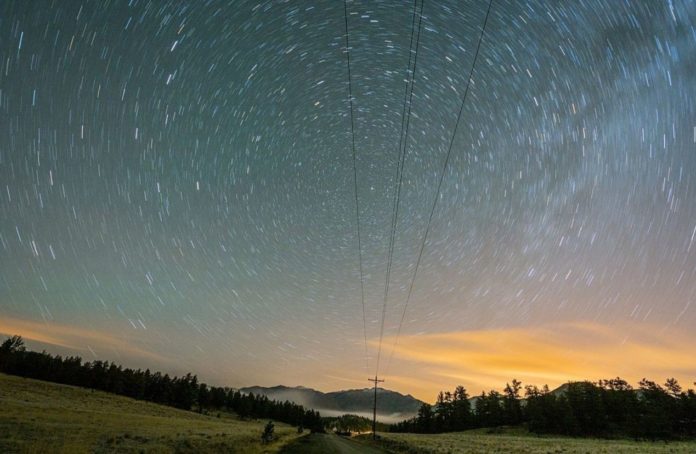The Lyrid meteor shower, known as the oldest recorded meteor showers, will light up the sky all day on Thursday, with experts forecasting a peak at around 1 pm.
According to the Royal Observatory Greenwich’s Tania de Sales Marques, “Since the peak occurs during the day the best time to try to spot the shower will be before sunrise on the 22nd or after sunset.
- Enceladus: A Potential Haven for Extraterrestrial Life in its Hidden Ocean Depths
- New Experiment: Dark Matter Is Not As ‘DARK’ As All We Think
- Scientists in Fear of This New Predator From Red Sea Eating Native Species in Mediterranean
- Does This Mean We Stopped Being Animal and Started Being Human Due to ‘Copy Paste’ Errors?
- The One Lifestyle Choice That Could Reduce Your Heart Disease Risk By More Than 22%
“It is expected that this meteor shower will produce around 18 meteors per hour.”
Ms de Sales Marques further added that because the Moon will be at a waxing gibbous phase, there will be quite bright in the sky meaning conditions “won’t be very favorable”.
The Lyrid meteors are named after the constellation of Lyra the Harp, where the shooting stars appear to have originated.
Meteors are created when space rocks or debris burn up entering Earth’s atmosphere, creating long streaks of light.
These meteors are pieces of debris falling from the Thatcher Comet, which is expected to return to the inner solar system in 2276, after an orbital period of 415 years.
Ms de Sales Marques said:
The Lyrids have been observed as far back as 687BC, the oldest known record of any meteor showers still visible today.
It is a moderate shower with the occasional fireballs, nicknamed the Lyrid Fireballs.
Stargazers wishing to see the meteor shower will also be able to spot Vega, which is Lyra’s brightest star.
Vega is one of the brightest stars in the sky and is one of three stars that make up what is known as the Summer Triangle.
“This recognisable asterism will be easy to find in the pre-dawn sky,” said Ms de Sales Marques.
Astronomers recommend that anyone wanting to see the meteor shower should aim to be as far away from artificial light as possible.
Ms de Sales Marques added:
It is worth mentioning that meteors will be visible all over the sky, not just in the direction of the radiant, so to maximise your chance of spotting meteors, try to find a safe place that has an unobstructed view of the whole sky.
As with any stargazing, you’ll need to allow at least 15 minutes for your eyes to adjust to the dark.
According to NASA, the peak of the Lyrid meteor shower will be overnight on April 21-22. As with most meteor showers, the peak viewing time will be before dawn, but the Lyrids will become visible beginning at about 10:30 p.m. local time.
If you can’t get out that night or the weather doesn’t cooperate where you are, one night before or after the peak is also expected to present a pretty good viewing opportunity.
- Enceladus: A Potential Haven for Extraterrestrial Life in its Hidden Ocean Depths
- New Experiment: Dark Matter Is Not As ‘DARK’ As All We Think
- Scientists in Fear of This New Predator From Red Sea Eating Native Species in Mediterranean
- Does This Mean We Stopped Being Animal and Started Being Human Due to ‘Copy Paste’ Errors?
- The One Lifestyle Choice That Could Reduce Your Heart Disease Risk By More Than 22%
The Lyrids occur between 16-25 April every year.
For Additional Resources
Determine Meteor Shower Activity for Where You Live
http://leonid.arc.nasa.gov/estimator.html and https://solarsystem.nasa.gov/asteroids-comets-and-meteors/meteors-and-meteorites/lyrids/in-depth/
